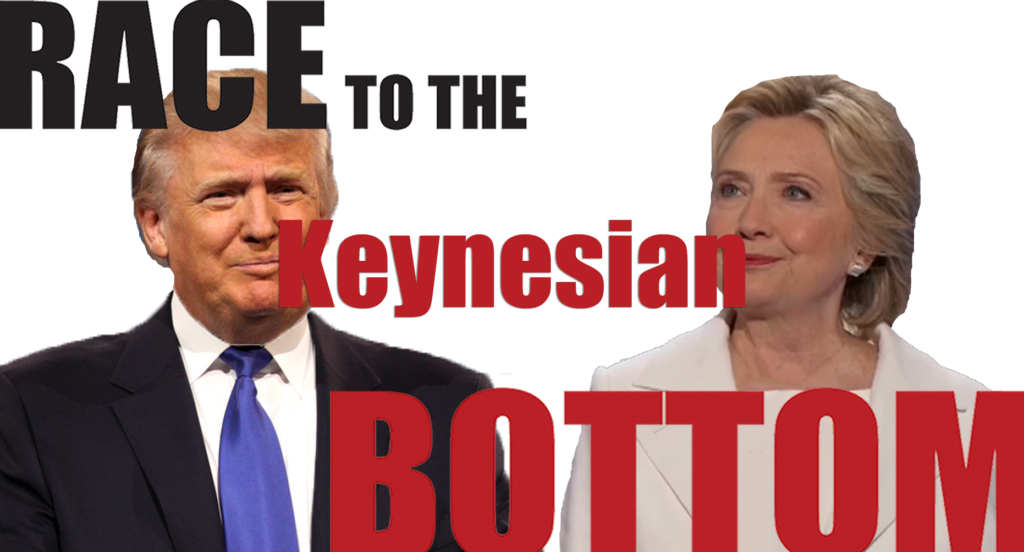
John Maynard Keynes was the most influential economist of the 20th Century. His view, and the view of his followers, i.e., Keynesians — that recessions could be overcome and economies could be stimulated with massive amounts of government spending backed by borrowing — dominated economic textbooks and formed the core of liberal/progressive economic policy for over 50 years.
It is an approach to economic policy that failed to accomplish its objectives over and over again. In the 1970s, Keynesianism was totally discredited when the economy experienced both high unemployment and high inflation at the same time, something that is theoretically impossible according to the Keynesian economic model. Politically, the final nail in the Keynesian coffin came in 1980 with the election of Ronald Reagan and the ushering in of supply side fiscal policy which focused on growing the economy through freer markets, private investment and entrepreneurship rather than government spending.
During the depths of the 2007-2009 recession, brought about by eight years of Keynesian monetary policies, i.e., easy money and credit and artificially low interest rates, Barack Obama’s “stimulus package” revived the long discredited Keynesian world view. His plan at the beginning of 2009 to spend a trillion dollars on “shovel ready” infrastructure projects was, in pure Keynesian fashion, supposed to provide immediate stimulus to the economy and bring unemployment rates down below 8 percent within six months. Needless to say, the money was spent but the lower unemployment rates didn’t materialize. Unemployment didn’t dip below 8 percent until the end of 2012 — two and a half years after Obama’s Keynesian infrastructure stimulus plan was supposed to do the trick.
It should be noted that Keynesian borrow-and-spend fiscal policies don’t work to bring about economic growth because the theory is fundamentally flawed. It ignores basic economic principles and pretends that money borrowed by the government from the private sector would otherwise be sitting in a mattress and not be being used anywhere else for any other purposes. In other words, it assumes that scarce funds borrowed from the private sector and scarce resources used by the public sector would have not otherwise be used. It is an economic model that ignores the reality of opportunity cost.
So the question now arises: In this year’s presidential election, who is the more Keynesian candidate? Donald Trump or Hillary Clinton? As of this writing it looks like Donald Trump is in the lead, and not by a nose but by at least a length.
It is no surprise that Hillary Clinton would be pushing a Keynesian infrastructure stimulus as the centerpiece of her approach to somehow motivate the economy out of its worst post recession recovery since the Great Depression. A Democrat presidential candidate advocating Keynesian stimulus is hardly worth mentioning. If elected she is proposing to go on a $275 billion infrastructure spending spree. Of course this is a horrible idea. Just when the private sector needs access to more, not fewer resources in order to bring about long term economic growth, Mrs. Clinton wants to divert over a quarter of a trillion dollars to government control. And that’s what Keynesian policy always does. It diverts resources from private sector entrepreneurs to politicians and bureaucrats.
But economic ignorance is not confined to one political party. It was Richard Nixon back in 1971 who, when deciding to fight inflation with wage and price controls and to take the U.S. off the gold standard, stated that, “I am now a Keynesian in economics.”
That said, since Ronald Reagan ushered in supply side fiscal policy, Republicans have been critics of the Keynesian approach – until now. Not to be outdone by Hillary’s economic ignorance, Donald Trump has decided to show that he can sink to even lower depths — as if he hadn’t already with his arguments in favor of protectionism and economic isolationism, rejecting the thinking of every conservative economist from Adam Smith to Milton Friedman. (Keynes was also a protectionist.)
Last week, Trump decided that Hillary’s plans for economic stimulus didn’t go far enough. He is proposing to at least double down on Clinton’s plans. According to the New York Times, he wants to spend anywhere from $800 billion to $1 trillion, although most other accounts quote Trump as saying simply that he wants to more than double Clinton’s proposal. And, again, in true Keynesian fashion, he says he wants to issue more debt to pay for it rather than looking for places to cut in the current hugely bloated federal budget. Of course if over a half trillion dollars were needed to fix roads and bridges, this would be the truly conservative way to pay for it.
Keynesian economics is alive and well in this year’s race for president. The fact that it has always failed as an approach to economic stimulus seems to have made very little impression on the two leading candidates for president. This does not bode well for robust economic growth in the future.




